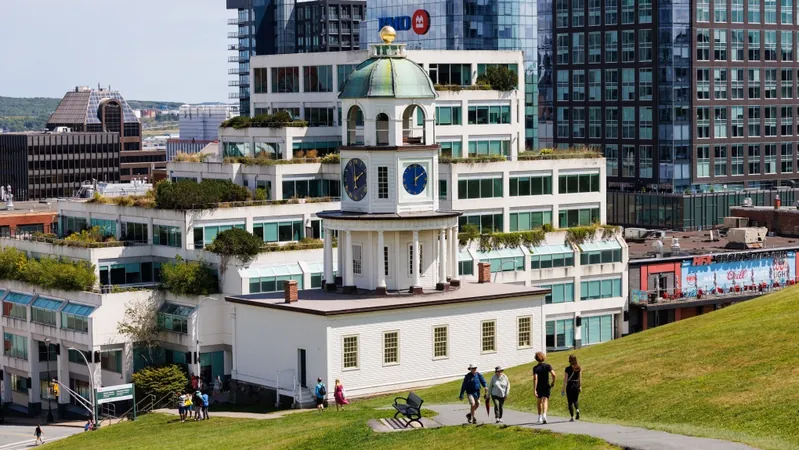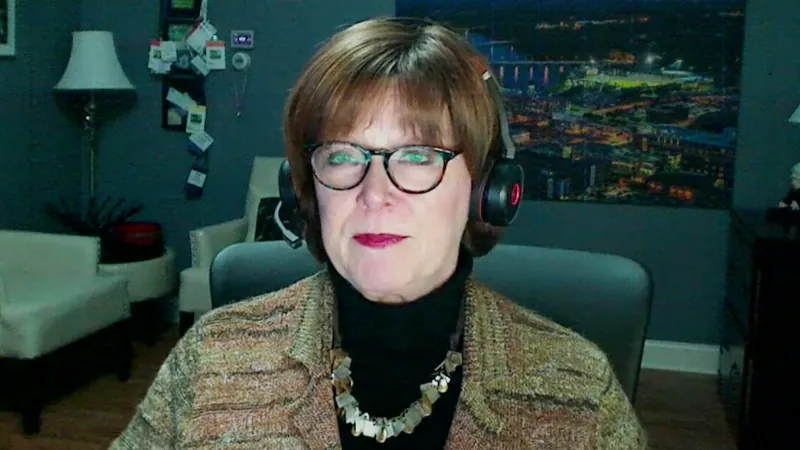
The Future of Farewells: Discover Natural Organic Reduction (NOR)
2024-11-04
Author: Charlotte
The Future of Farewells: Discover Natural Organic Reduction (NOR)
As British Columbia projects a staggering 1,095,800 fatalities between 2025 and 2045, a significant trend is emerging—over 850,000 individuals will opt for cremation. In response to this impending crisis, Andrew Wong from Heritage Gardens poses a critical question: “How can our province accommodate these growing numbers while also addressing the emotional needs of grieving families?”
Unique to British Columbia’s context, where cremation rates are among the highest in North America and cemetery land is increasingly scarce, the solution might lie in an innovative practice called Natural Organic Reduction (NOR). This method, which has been legalized in twelve U.S. states since 2019, provides an eco-conscious alternative to both cremation and traditional burial that is particularly suited for densely populated urban areas.
What is NOR?
At its core, NOR is an environmentally friendly process that converts human remains into nutrient-rich soil. The procedure involves placing the body in a vessel filled with natural materials such as wood chips, alfalfa straw, and sawdust. These materials are layered around and above the body, creating conducive conditions for microbial activity which is essential for decomposition. Over a span of 8 to 12 weeks, the body’s natural gut flora break down the soft tissues, with temperatures in the vessel reaching as high as 170 degrees Fahrenheit due to the metabolic processes of the microbes.
The straw insulation not only regulates temperature but also encourages the flora to thrive, ensuring that all organic matter is efficiently decomposed. Once the temperature begins to decrease, facilitators remove the contents to sift through for any surgical implants and further process the bones into smaller fragments for complete breakdown. Finally, the remaining soil is aerated and dehydrated adequately, resulting in clean, fertile earth—a beautiful return to nature that mirrors thousands of years of natural recycling, but with a controlled and hygienic approach.
Wong notes, “The process takes about 8-12 weeks, which generally allows families the emotional space needed to grieve.” Providers often maintain open facilities where loved ones can visit, decorate the vessel with personal items, or simply reflect in the presence of their departed. This approach has garnered positive responses, as families find comfort in the opportunity to mourn actively during the NOR process.
By the end of this transformative journey, families receive approximately 300 lbs of soil made from their loved one's remains. Unlike traditional burial methods, NOR does not occupy space in a cemetery. Moreover, this process not only minimizes the carbon footprint compared to flame cremation but may also resonate with a growing population concerned about environmental sustainability.
In rare cases, particularly with diseases like Ebola or Creutzfeldt-Jakob, families may be required to pursue cremation instead of NOR. However, the vast majority of individuals qualify for this unique and environmentally beneficial alternative.
With such compelling benefits, the question arises: is it time for British Columbia to embrace Natural Organic Reduction as a viable option for residents? As the push towards eco-conscious practices increases, NOR may well be the innovative solution that aligns with both the needs of grieving families and the environmental vision of our province.
Could NOR redefine how we say our final goodbyes? Only time will tell, but the potential it holds is certainly worth considering.









 Brasil (PT)
Brasil (PT)
 Canada (EN)
Canada (EN)
 Chile (ES)
Chile (ES)
 España (ES)
España (ES)
 France (FR)
France (FR)
 Hong Kong (EN)
Hong Kong (EN)
 Italia (IT)
Italia (IT)
 日本 (JA)
日本 (JA)
 Magyarország (HU)
Magyarország (HU)
 Norge (NO)
Norge (NO)
 Polska (PL)
Polska (PL)
 Schweiz (DE)
Schweiz (DE)
 Singapore (EN)
Singapore (EN)
 Sverige (SV)
Sverige (SV)
 Suomi (FI)
Suomi (FI)
 Türkiye (TR)
Türkiye (TR)